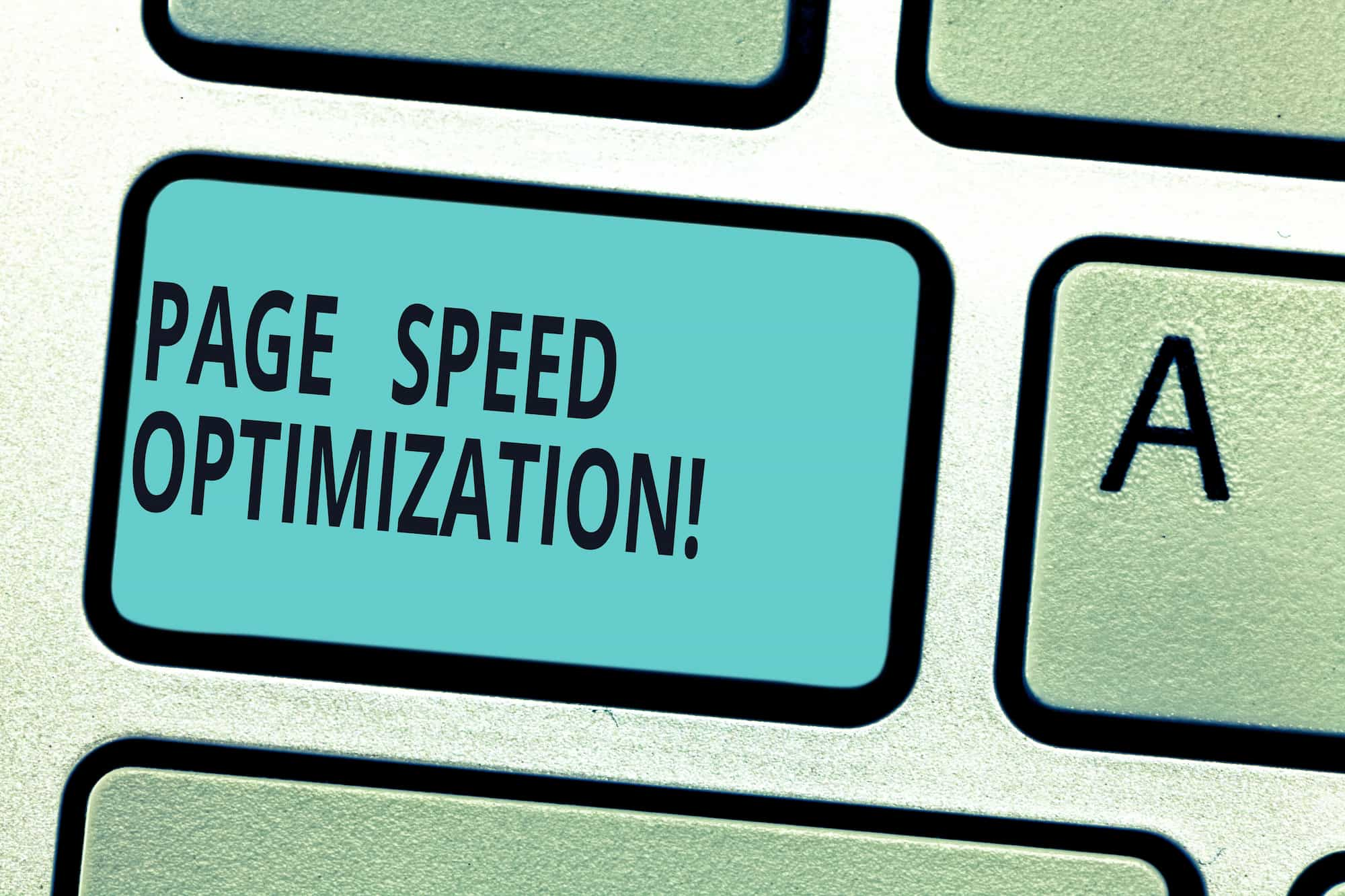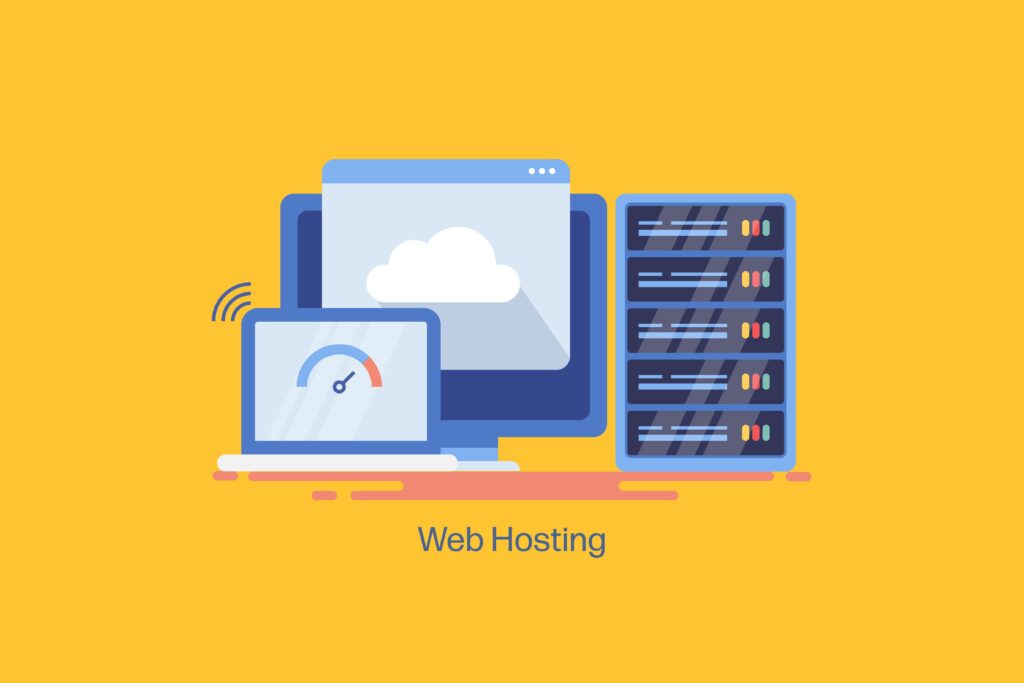In the 21st century digital world, a website is the digital face of your business. But just having a website does not translate into success.
Numerous factors go into designing a website as well as making it search engine optimized (SEO). A website without SEO is like Big Bazar in the middle of the Amazon forest. It has no practical use.
So to make your website successful, you will scour the internet searching for all the best ways to achieve it. You might even successfully implement many of the best SEO tips and tricks that we have provided in our SEO articles as well.
However, chances are you might end up overlooking something crucial while implementing the myriad of techniques for the best SEO results.
One such critical factor of SEO that is pretty easy to get ignored is page speed. This is an easy-to-commit big mistake.
It is worth noting that page speed has become a key ranking factor for years now. After all, the game depends on attention span and nobody likes to wait. Hence, the Importance of Page Speed in SEO cannot be understated.
New website owners may not see the importance of page speed in SEO mostly because the ranking factors change quite often.
However, page speed has become one of the important metrics by which Google’s algorithm ranks pages. Google itself has announced that page experience is one of the factors that affect the ranking in its new “Core Web Vitals” list.
Presently, Google’s Core Web Vitals Algorithm intends to optimize the search experience by measuring page load time along with interactivity and visual stability as the pages load.
Besides, a good speed impacts organic ranking, improves user experience, and increases conversion rates.
In other words the quicker and more accurately the site loads, the sooner the customer or visitor is satisfied. So it is essential to know what is page speed in SEO and how page speed affects SEO
What Is Page Speed in SEO?
Generally speaking, page speed is the time taken for a browser to load a specific page of a website. The speed at which a website loads is one of the main metrics that decide a site’s overall rank.
Any site which takes longer load times tend to have a higher bounce rate and this is exactly how page speed affects SEO.
Bounce rate if a website is the minimum time a visitor stays within a website. So if the visitors are leaving quickly or not staying on the site for say even a second, then the website is suffering from a high bounce rate.
Slow page speed can be one of the primary causes for this issue which in turn will affect the site’s ranking as well as conversions if any.
There are multiple elements of a website that come together in deciding how fast a website loads. These elements include its HTML code, CSS that styles page elements, different JavaScript files, images, videos, other multimedia, and more.
Given the number of parts of a website, it is natural for a website to take time to load on a browser. Besides, the speed of the web server on which the website has been hosted will also factor into the page speed of the website.
It must be noted that the page speed on desktops and mobiles is measured separately. This is because the experience for the users is different on the different platforms. Hence, a similar page need not have the same loading time on mobile as well as on the desktop.
One must also know that page speed and site speed is two different things. The average speed of several sample pages on a website is site speed while the time taken by a person to start consuming an individual page is known as page speed.
Since users prefer fast-loading websites as they provide better user experience and efficiency, it is necessary to know your own website’s page speed.
Arguably, Google is the top search engine in the world and this is where you are trying to get a superior rank on SERP. Hence, achieving a good Google page speed score must become an important action in your SEO plans.
What Is a Good Google Page Speed Score?
Page speed is one of the factors that decides the bounce rate of your website. This in turn affects the website ranking.
In 2010, Google announced that page speed was one of the ranking factors for search indexing, and in 2017 incorporated mobile site speed to rank sites on its “mobile-first” pages.
Recently, it introduced Page Experience to its ranking signals. Therefore it is vital to keep in check the page speed of your website to achieve the best SEO results.
The easiest way to check the page speed of your website is to make use of the Google PageSpeed score from Google’s PageSpeed Insights tool.
You know your website isn’t up to standards if you receive a low score in red. If this is the case, you need to immediately work towards achieving a good Google page speed score.
Success in the digital world has come down to milliseconds. In other words, a good loading time provides a direct boost to conversion rates and brings down bounce rates.
Thus having a Google PageSpeed score of 90 or above is considered to be a good Google page speed score. If the score is between 50 and 90, then the site needs improvement. Anything below 50 is outright poor.
You May Also Like Importance of Mobile Friendly Website
How to Improve Page Speed?
We have now understood how critical page speed is for your website’s success. It is both, an important usability metric as well as one of the known ranking factors.
No one will waste their time waiting for your pages to load while there are dozens of other sites on the same topic that load way faster.
But worry not, for there are ways to improve your page speed by optimizing your website’s infrastructure, and here are 17 of the best methods to improve page speed.
1. Compress and Optimize Your Images
In most cases, a website is slow because of the overpopulation of photos and their size. Although it is important to have good quality images and other visual elements for SEO, one cannot remove all of them for better usability. So the best way to tackle this issue is to minimize file size without sacrificing quality.
In other words, re-size the image to the maximum width you’ll need before uploading it to the site. For example, it is only a waste if you were uploading big images when the max width of your blog is 1200px.
Use an image optimizer tool like Image compressor which will reduce the file size dramatically without quality compromise. Also, use responsive images through the latest upgrade for WordPress.
This system automatically creates a set of images that have different sizes as one uploads an image to the WordPress media library. Thus a page is loaded depending on the display resolution thereby increasing page speed.
2. Optimize Video Delivery
Unoptimized videos or video content on a website can easily increase the loading period of a web page. Therefore it is necessary to follow certain best practices while embedding videos in your content.
3. Using Streaming Service
If you want to have videos on your website and yet not be bogged down by slow page loading speeds, upload your videos to a streaming service instead of your hosting web server. Make use of video streaming services like YouTube and Vimeo.
By using this method, you decrease the load on your server since the content will come directly from the provider.
Some other ways to optimize videos on your website are to disable video autoplay, use lazy loading, and replace video iframe with a preview image.
4. Enable Caching
Making use of caching mechanisms is an excellent way to help achieve better page speed and is a must for all websites.
Essentially, when you use caching, the server creates static HTML versions of your webpages and shows them to the visitor which is pretty quick.
Otherwise, it did have to generate the pages from the beginning for every instance of a request for a page.
It must be noted that the caching mechanism is clever enough to understand when there is a change to a page. It also knows when not to cache a page. Thus maintaining the overall website experience the same.
5. Minify CSS and JS
A website needs CSS and JS files to provide a great user experience for visitors. However, this can affect page speed.
Hence it is necessary to use minification, a process that removes all unnecessary characters from CSS and JS files.
The process does not change the functionality but only reduces the file size thus helping towards faster loading times.
6. Use Scripts Asynchronously
Ensuring all scripts are loaded asynchronously is another very effective trick for page speed optimization. Normally, the browser will try to load any script that is found in the website’s HTML code while loading a page.
Only after that does it goes towards rendering the page. Naturally, the two steps only add extra time for the page to get loaded. This becomes worse when scripts are hosted on slow servers.
Therefore, you need to load scripts asynchronously and prevent the cause for slower page loading speed.
Asynchronous loading of script instructs the browser not to wait for the script to be fully loaded, and instead, continue loading the page. This is done by a developer by using a command code or a premium plugin
7. Move to A Faster Host
Noting that you have implemented the above-mentioned changes and there still seems to be a page speed problem on your website, then it’s time for you to change your host.
The loading speed of your website has a direct connection to your hosting provider. It is well recommended for serious bloggers or online business owners to use a VPS to host their websites instead of shared hosting.
The chief difference between VPS and shared hosting is that the latter is cheaper because there will be multiple websites hosted on a single server.
In other words, many websites including your website will be sharing the same resources which will only lead to delayed web page loading.
However, when you rent your own Virtual Private Server (VPS), your website has its own IP on a virtual server with dedicated resources.
Thus you don’t compete with other websites for resources and consequently increase the page speed of your website.
8. Deactivate Unnecessary Plugins
The use of Plugins (WordPress) or add-ons (other CMS) is common practice in all CMS. These are additional software installed on a website.
Sometimes, plugins are installed for testing purposes and then forgotten, that does not mean the plugins will stop functioning and hence, needlessly start eating into the page speed of the website. Therefore it is vital to review all your active plugins and deactivate the ones that are of no use.
12. Upgrade Your CMS Software and Plugins
This goes without saying but it is a good practice to regularly update your CMS software and plugins/add-ons. All software providers regularly improve the security and performance of their software.
Hence, it is only wise to make sure the software you are using is up-to-date. However, note to take a website backup before performing upgrades.
In some cases, new versions can cause issues, and having an older version can help you revert to the previous settings.
13. Upgrade to The Latest Version of PHP
Upgrading to the latest version of PHP can make a HUGE difference in your page speed. This is a highly technical task but can work wonders for your website.
All major CMS makes use of PHP which is a programming language, and its updated version only further improves its performance.
However, make note that PHP is not limited to speed improvements but has other differences as well.
Hence, abruptly switching to newer versions without extensive testing can be disastrous. Therefore consult with a developer before taking any further steps.
14. Optimize Your DB
Websites use data that essentially is retrieved from the database server that all CMS platforms use. The database server used can be MySQL, MariaDB, or SQL Server. All in all, a slower server means slower website loading.
Adding and deleting content or posts to your website makes the database get bigger, hence it is well advised to do some maintenance work at some point.
By running maintenance checks, the database size will become smaller and make it run faster and smoother.
15. Reduce Redirects
Using too many redirects can have a bad effect on your page speed SEO. Redirects are an excellent option for sending your visitors to the right pages on your website.
But this process can also cause your pages to load slower than normal. This can be a real problem for a new website trying to usher in some traffic. Bear in mind, that a slow loading page is not a welcome sign but a leave now warning.
Sometimes redirects tend to hide under the roof but several tools can check for redirects on your website. These tools scan your website and give a detailed report on all the redirects within the site.
The tools that you can use for detecting redirects are Google PageSpeed, Redirect Mapper Tool, Broken Requests Tool, and Screaming Frog Bulk Redirect Checker.
Now that you know what tools to find and eliminate redirects in your website and increase its loading speed, here are some of the ways to truly optimize your website by keeping low on redirects.
- Never link a page to another page that already has a redirect on it.
- Only make use of necessary plugins, some plugins can create unnecessary redirects.
- Run frequent scans on your website to detect old redirects leading to pages deleted a long time ago. This is especially needed when switching hosting providers.
You May Also Like Best Digital Marketing Tools
16. Use CDN to Improve the User Experience
Slow page load time can cause a high bounce rate for a website. Besides, most mobile users abandon websites that have slow-loading pages.
Thus, ensuring quick load time for your website is critical to its success and there is a quick way to achieve it. Using a CDN (Content Delivery Network) will give a big boost to your website.
CDN is made by storing static content like HTML, images, and videos on a group of servers located in different locations around the world.
Whenever a visitor accesses your website, CDN will deliver the cache of static content of your website from the server closest to the user.
Thus a visitor from India visiting a website hosted on a US server will get the content from one of the CDN servers located in India or around. Thus, the loading speed of the page is drastically quicker.
The whole point of CDN is to increase the loading speed of a website. However, there are other benefits associated with the use of CDN.
The increased website speed and loading time also improve user experience, bringing down bounce rate. Besides, CDN also distributed server load for websites experiencing a lot of traffic. This makes the server quick to respond and reliable.
17. Add Expire Headers
Lag in website loading speed will neither give scope nor hope for the website. Hence, it is website developers and SEO professionals should give much attention to increasing the speed of loading a page on a site.
This can be achieved through various caching methods but one must always remember to add the expire header.
Expires header is an HTTP header indicating the possibility of either obtaining information on request from the browser cache or if there’s a need to access the server as the page option in the cache has already expired.
The use of cache and expire header is recommended because they have a direct effect on page loading speed. It may be noted that it takes far less time to respond to a user request from the cache when compared to that of a server.
The headers work so well because they retain content in the browser’s cache. It also removes obsolete content caching as well.
However, expire headers are best suited for pages and content elements that are updated either periodically or are going to be changed soon.
You May Also Like SEO vs PPC: Which Is Better for Your Business?
Conclusion
In conclusion, page speed is important and needs to be checked regularly. It’s not a one-time task. In time, a website grows in content and traffic, and therefore, you need to check it for load speed.
Following the above-mentioned best methods to improve page speed will surely help improve your website’s performance and ranking.
However, if you are nagged by some doubts, then feel free to get in touch with the skilled SEO team of OneCity and watch your website grow successfully.







